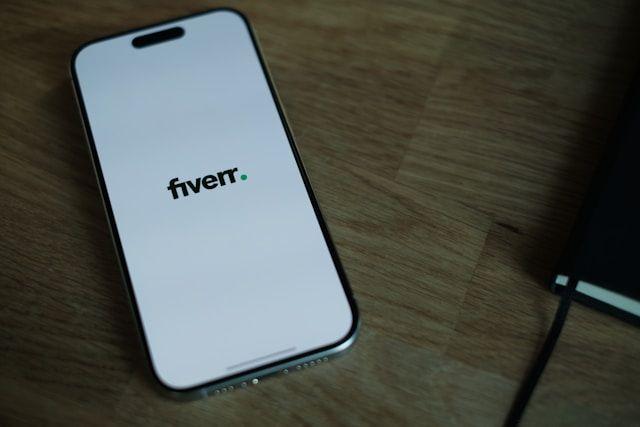AMAKA Fractional Teams is on a Strategic Pause. Click here to see what that means

How to Create Content That Converts: From Awareness to Pipeline in 2025

Destiny Awata
August 19, 2025 | 7 minutes read
How to Create Content That Converts: From Awareness to Pipeline in 2025
The Content Conversion Crisis
The 5 Elements That Actually Make Content Convert
1. Build Trust First
- Educational posts that solve real problems without selling anything
- Behind-the-scenes insights that show your process and expertise
- Thought leadership that challenges industry norms (like this post questioning funnel orthodoxy)
- Client success stories that highlight results without pushing services
- Industry analysis that provides unique perspectives
2. Build Your Content Like an Ecosystem
- Someone reads your blog post about creative team challenges
- Three months later, they see your LinkedIn post about project management
- Two weeks after that, they watch your webinar
- A month later, they finally book a call
- Problem-aware content ("I know something's wrong, but not sure what"):
- Solution-aware content ("I know my options, need to understand them")
- Decision-ready content ("I'm ready to buy, just need to choose") e.g. detailed case studies and testimonials.
3. Focus on Problems, Not Products
- Customer support tickets – What do people complain about?
- Sales call recordings – What challenges come up repeatedly?
- Social media comments – What are people struggling with publicly?
- Industry forums – What questions keep appearing?
- Your own experience – What was frustrating before you found your solution?
4. Track What Actually Works
- Time on page – Are people actually reading, or just clicking and leaving?
- Scroll depth – How far down your content do people read?
- Return visitors – Are people coming back for more content?
- Content completion rates – For videos/podcasts, how much do people actually consume?
- Email sign-ups from specific content – Which pieces make people want to hear more?
- Demo requests attributed to content – What content actually drives sales conversations?
- Customer acquisition cost by content type – Which content attracts customers most efficiently?
- Customer lifetime value by source – Does content attract better or worse customers than other channels?
- Comments quality – Are people asking thoughtful questions or just dropping emojis?
- Shares with context – When people share your content, do they add their own insights?
- Inbound mentions – Are people referencing your content in their own posts or conversations?
5. Don't Let Them Forget You
- Downloadable resources
- Email content that provides ongoing value
- Evergreen insights that stay relevant for years
- Community discussions that keep you top-of-mind
The Modern Approach That Actually Converts
- Trust-first ecosystem where each piece provides standalone value
- Multiple entry points for different awareness levels
- Cross-referencing content that builds authority over time
- Patient nurturing that respects the buyer's timeline
How AI is Changing the Game
- Generic educational content is becoming commoditized - don't do it!
- You need unique perspectives and proprietary insights
- Bottom-of-funnel content (comparisons, testimonials, pricing) becomes more valuable
- Your expertise and brand story matter more than ever!
Your Content Conversion Checklist
- ✅ Provides Standalone Value – Can someone get real value from this piece alone?
- ✅ Solves Real Problems – Does this address an urgent challenge your audience faces?
- ✅ Builds Trust or Authority – Will this make someone more likely to respect your expertise?
- ✅ Fits Your Ecosystem – Does this complement your other content without being redundant?
- ✅ Worth Saving – Would someone bookmark, save, or reference this later?
- ✅ Sparks Conversation – Does this invite engagement or discussion?
- ✅ Clear Purpose – Do you know exactly why you're creating this piece?
The Bottom Line
Ready to Build Content That Actually Converts?
Table of Contents
Related Blogs

The Creative Team Crisis: How to Build Creative Team Output in 2025
Most companies are burning money on creative teams without realizing it. They're either outsourcing everything to AI or managing 5+ freelancers who can't scale. Here's how to ensure creative team output

Freelancers vs. Agencies vs. Fractional Teams: How to Structure Your Marketing Team
Scaling your marketing efforts and business means making tough decisions about who to hire. We explore three options: freelancers, agencies, or fractional teams and how they can impact your marketing ROI.

The True Cost of Hiring a Marketing Agency
What does a marketing agency cost? Before you hire a digital agency make sure there are no hidden costs coming your way

Best Niche Marketing Agencies 2025
Marketing agencies will always exist, but their value is shrinking as AI and automation commoditize execution. We look at the best marketing agencies in 2025, and the alternatives.

Best Marketing Freelancer Platforms 2025: Where to Find the Best Talent
Freelancer platforms like Fiverr opened the door to flexible marketing talent. We investigate the best options for 2025 and the alternatives

Why Brands Are Moving from Agencies to Fractional Creator Teams
For years, agencies were the go-to when businesses required B2B services, especially for marketing or technical needs. However, in recent times, there has been a shift from agencies to creator teams. We explore why.

The Best Fractional Marketing Teams 2025
CMOs and founders are under pressure like never before. Hiring a full marketing team is expensive, slow, and often overkill. We explore the best fractional marketing teams in 2025

How to Scale Your Creative Workflow Without Burning Out Your Team
As a marketing leader, scaling your creative workflow isn’t just about producing more assets — it’s about marketing ROI and growth. Here's how to do it without burnout out your team
Frequently Asked Questions
Here are the most common questions we receive, along with our answers
Trust-building content typically shows results in 3-6 months, but the timeline depends on your industry and how consistently you publish. You might see early indicators (increased time on page, email sign-ups) within 4-6 weeks, but meaningful business results usually take longer. The key is consistency and patience—content marketing is a compound investment.
Look for these signs: people consuming multiple pieces of your content in one session, returning visitors increasing over time, email subscribers engaging with multiple topics, and prospects mentioning specific content pieces during sales calls. Quality engagement matters more than quantity.
There are bus drivers who are famous on TikTok! Every industry has problems worth solving. The key is focusing on the human challenges behind the technical work. Instead of "How our software works," write "Why your team stays late every Friday (and how to fix it)." Even the most technical industries have emotional pain points you can address.
Quality beats quantity every time. One deeply valuable piece per week that truly helps your audience will outperform five shallow pieces. Start with one pillar content piece weekly (blog post, video, etc.) and repurpose it across different formats rather than creating entirely new content constantly.
Both serve different purposes in a content ecosystem but also work together. SEO helps people find you when they're actively searching for solutions. Social media keeps you visible while people are in "browsing" mode. Don't choose one—create content that works for both, then distribute strategically.
Track leading indicators: content consumption patterns, email engagement, website return visits, and sales conversation quality. Use attribution tracking to see which content pieces prospects consumed before converting, even if it takes months. Many businesses undervalue content because they don't track its role in the full customer journey.

Freelance services at your finger tips
Read our content